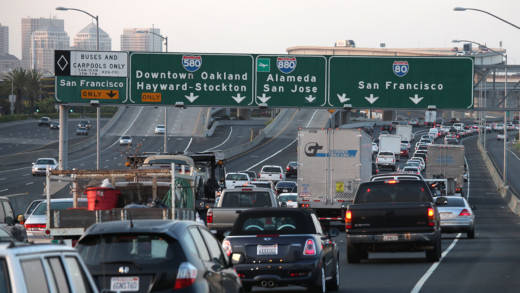Drivers in the market for electric cars may be able to count on a popular incentive. California lawmakers voted this week to extend a program that allows zero-emission cars to drive in carpool lanes.
The green and white stickers currently on electric, plug-in hybrid and hydrogen-powered cars are set to expire on January 1, 2019.
The program is just one of the ways California is trying to boost adoption of cleaner cars. The state has ambitious goal: put 1.5 million zero emission vehicles on the road by 2025. As of the end of 2016, around 245,000 have been sold in California.

“This year, California has demonstrated its environmental leadership on a global stage, stepping up as the federal government has stepped down,” said bill author Assemblymember Richard Bloom, in a statement. “We must continue to do so by extending this effective program.”
If Governor Jerry Brown signs the bill, AB 544 (UPDATE: Governor Brown signed the bill on October 10, 2017), here’s how the new program would work:
- Stickers issued to new cars after January 1, 2019 are valid for three full years and then until January 1 of their fourth year.
- Drivers issued stickers in 2017 and 2018 will be able to apply for a new sticker in 2019 that is valid until January 1, 2022.
- Stickers issued before January 1, 2017 will expire on January 1, 2019.
In addition, drivers that receive the Clean Vehicle Rebate, a state-funded rebate that can be several thousand dollars, won’t be eligible for HOV lane stickers unless their gross annual income falls below $150,000 for a single tax filer, $204,000 for a head of household filer, and $300,000 for joint filers.

